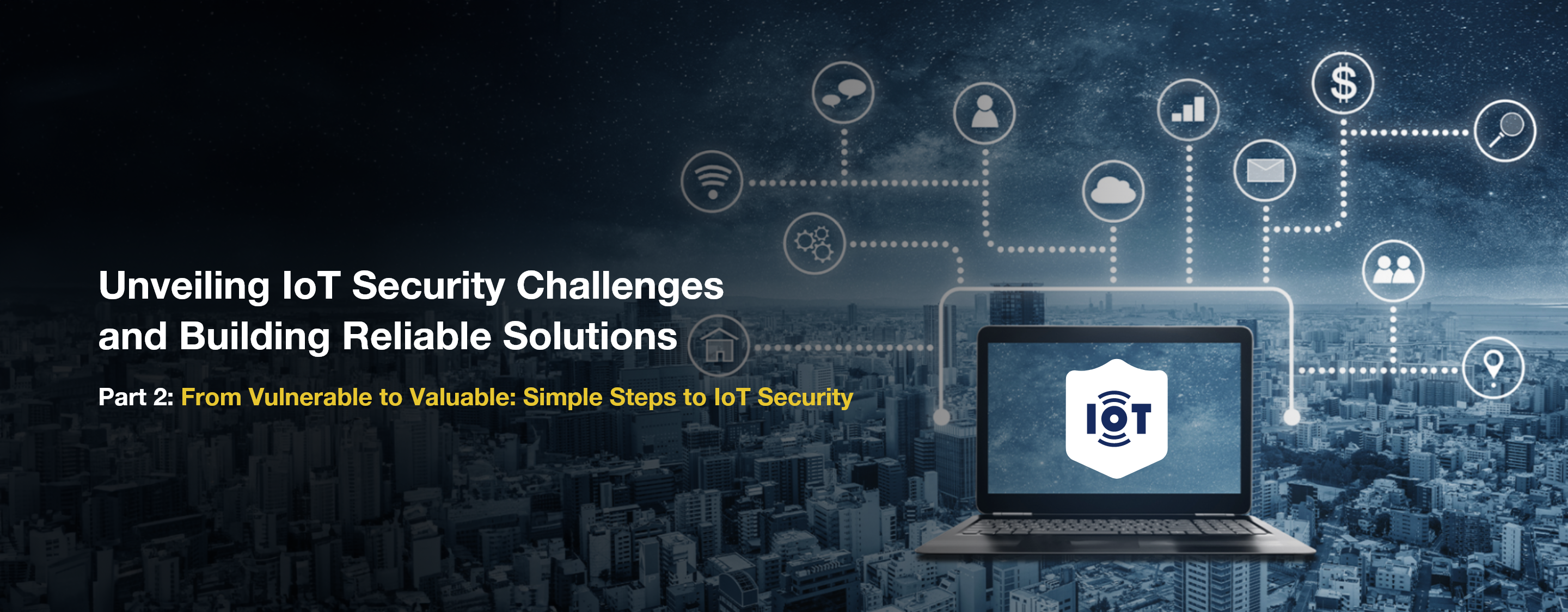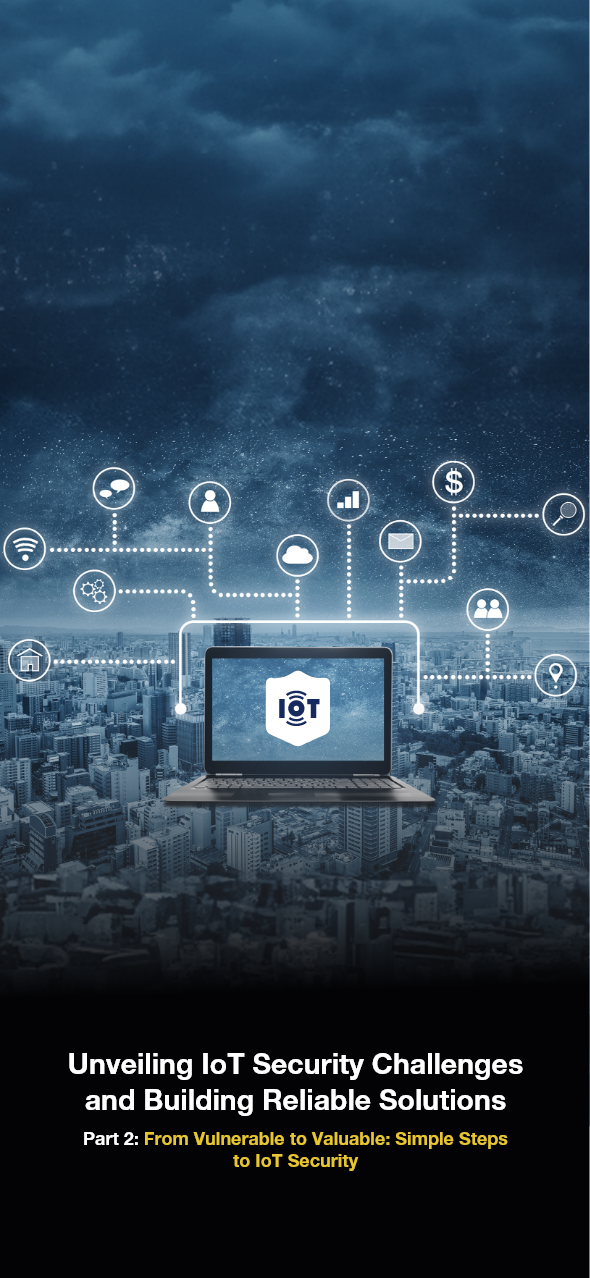

In Part 1, we unmasked the lurking vulnerabilities in our favorite IoT devices. Now, in Part 2, we flip the script! We’ll go from vulnerability detectives to security architects, laying out simple steps to turn those susceptible gadgets into reliable bastions of digital trust. Join us as we transform your vulnerable IoT ecosystem into a valuable one, secure and reliable!
- Establishing and embracing industry standards for IoT devices, protocols, and platforms can ensure compatibility and interoperability. These standards should cover device security, data privacy, and communication protocols.
- Giving the stamp of approval and double-checking IoT devices and platforms can boost an organization's confidence in their security. Plus, it's a handy way to pinpoint devices that might be easier targets for attacks.
- Utilizing a secure gateway can ensure that all devices on the network are communicating securely and privately. This gateway can encrypt communications, authenticate devices, and monitor network traffic for suspicious activity, all of which can reduce the risk of attacks and improve the overall security of the network.
- Making sure only the right folks get access to the device is a breeze with solid authentication methods, like two-factor authentication.
- Additionally, using a secure gateway and Public Key Infrastructure (PKI) can ensure that all devices on the network are authentic.
- Building IoT apps with security in mind is key. Things like threat modeling and code reviews during development can cut down on the risk of attacks, boosting the overall security of these devices.
- And don't forget about using secure boot and firmware update processes to make sure the device only runs reliable software.
- Making use of secure network protocols like VPN and HTTPS ensures that data gets transmitted in a secure way. VPNs can encrypt communications between IoT devices and the Internet, while HTTPS can encrypt communications between web servers and clients.
- Furthermore, employing a secure gateway can guarantee secure communication among all devices on the network. Network segmentation can also limit the impact of an attack on the network by dividing the network into smaller, separate segments.
- Adding locks and cameras, like tamper-proof enclosures, security locks, and surveillance cameras, is a smart move to protect devices from physical attacks.
- Using tamper-evident packaging makes sure devices haven't been messed with before they get where they're going.
- Regularly reviewing and updating the physical and software security of devices can also help ensure that devices are protected against physical attacks.
- Implementing data encryption can protect data against attacks and guarantee only authorized users have access to it. You can do better by using solid encryption tricks like AES or RSA to lock down data whether it's hanging out or on the move.
- Don't forget the regular check-ups and updates for device and software security. Throw in some access controls, like role-based access and multi-factor authentication, and you're making sure only the right folks get their hands on the data.
- Encryption is a great way to ensure data is safe from attacks and can only be accessed by authorized users. It is possible to use robust algorithms, such as AES or RSA, to encrypt data that is both resting and in transit.
- To further protect data, devices should be regularly checked for security and updated to the latest version. This includes conducting security audits, monitoring the device's location, and applying all the necessary security patches.
- Also, put in place access controls to ensure only authorized users can get to the data. This could involve role-based access controls, multi-factor authentication, and other security measures.
- Technologies like anonymization and pseudonymization are excellent privacy-enhancing solutions. Anonymization is the process of removing personal identifiers from data, and pseudonymization replaces the identifiers with pseudonyms to make it harder to identify individuals.
- Furthermore, transparent and clear privacy policies should be in place to make users aware of how their data is collected, stored, and used. It also allows users to opt out or delete their data if they choose to. Security checks and software updates should also be conducted to ensure any privacy vulnerabilities are addressed.
- Securing IoT devices can be done with the use of a secure gateway. This serves as a centralized point of control, and it can be used to monitor and control communication between the devices, ensuring it is secure.
- Encryption and authentication are also necessary to prevent unauthorized access. Regular security checks and software updates should be conducted to protect IoT devices against attacks.
- Governments and other regulatory bodies can create and enforce regulations for IoT devices to guarantee that the devices meet certain security standards. Getting certifications for encryption, authentication, and other security stuff is a big deal.
- Also, snagging certifications for following specific security rules, like ISO 27001, is a smart move. And hey, having a solid plan for responding to security incidents is a great way to tackle any problems that pop up fast and efficiently.
- Creating tools to keep an eye on and manage IoT devices is a cool way to ensure they're doing what they're supposed to. You can check out the network traffic, stop anything fishy, and keep tabs on what the devices are up to.
- Plus, these tools can even take charge and control the device's moves, like turning off certain features or shutting it down if needed. Security checks and software updates should also be conducted. Additionally, network segmentation can be used to limit the impact of an attack by isolating IoT devices from the rest of the network.
- Security monitoring and incident response processes should be in place. Regular monitoring should be done, as well as the implementation of tools and techniques to Detect unusual or suspicious behavior. Making sure you've got security software in place is a must.
- Don't forget to have a solid plan for what to do if something goes wrong – that's your security incident response plan. Keep a close eye on things with regular security checks and software updates.
- And set up those devices right with strong passwords and limited access to keep things tight and secure.
In conclusion, the advent of the Internet of Things (IoT) has brought with it a great many benefits, yet it has also introduced a large number of security problems. To handle these issues, People Tech Group offers solutions to the difficulties companies are confronted with, such as Patch Management to keep systems up-to-date, SOC Monitoring to identify any suspicious behavior, VAPT to discover any potential weak points, and Security Rating services to keep tabs on their security score and suggest ways to enhance their security.
